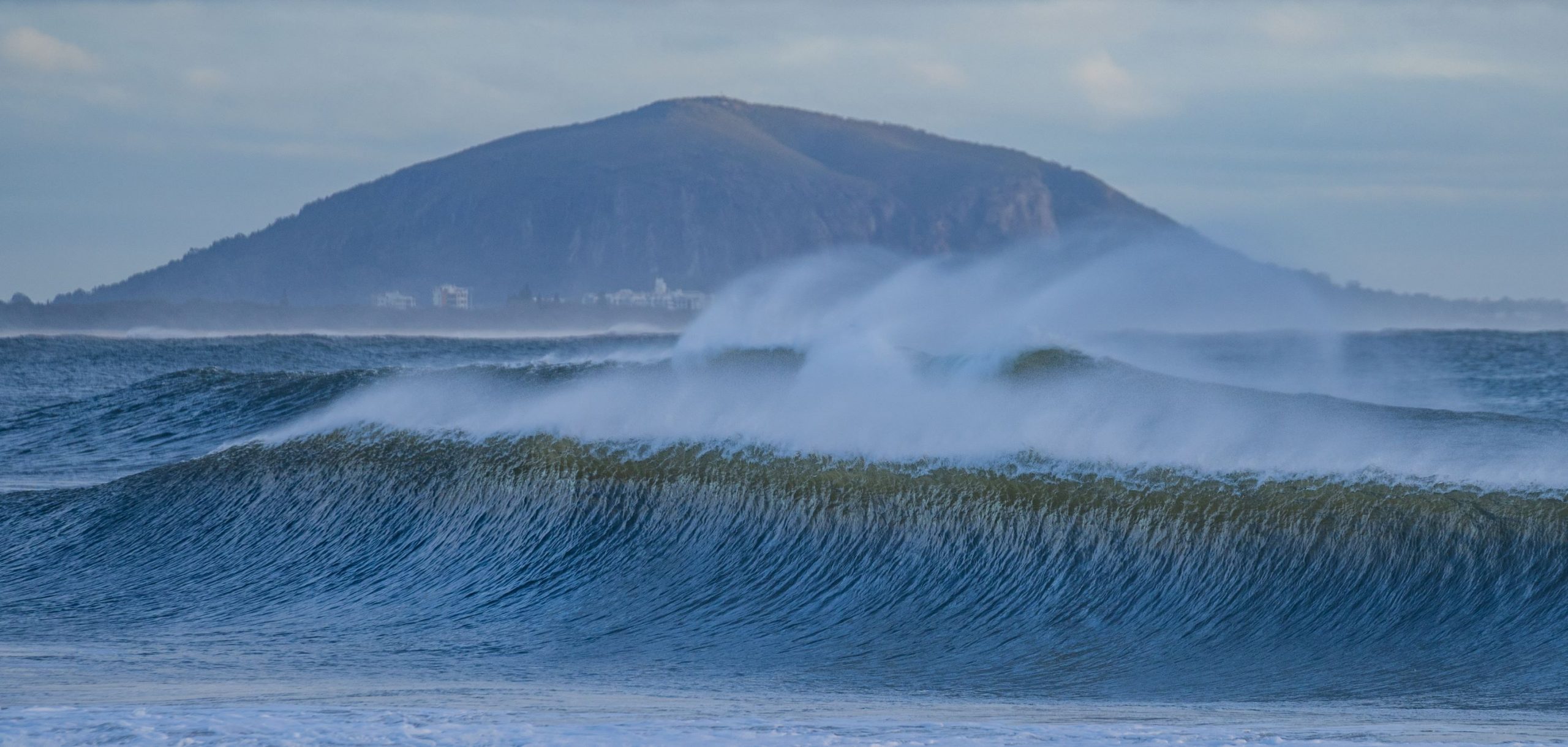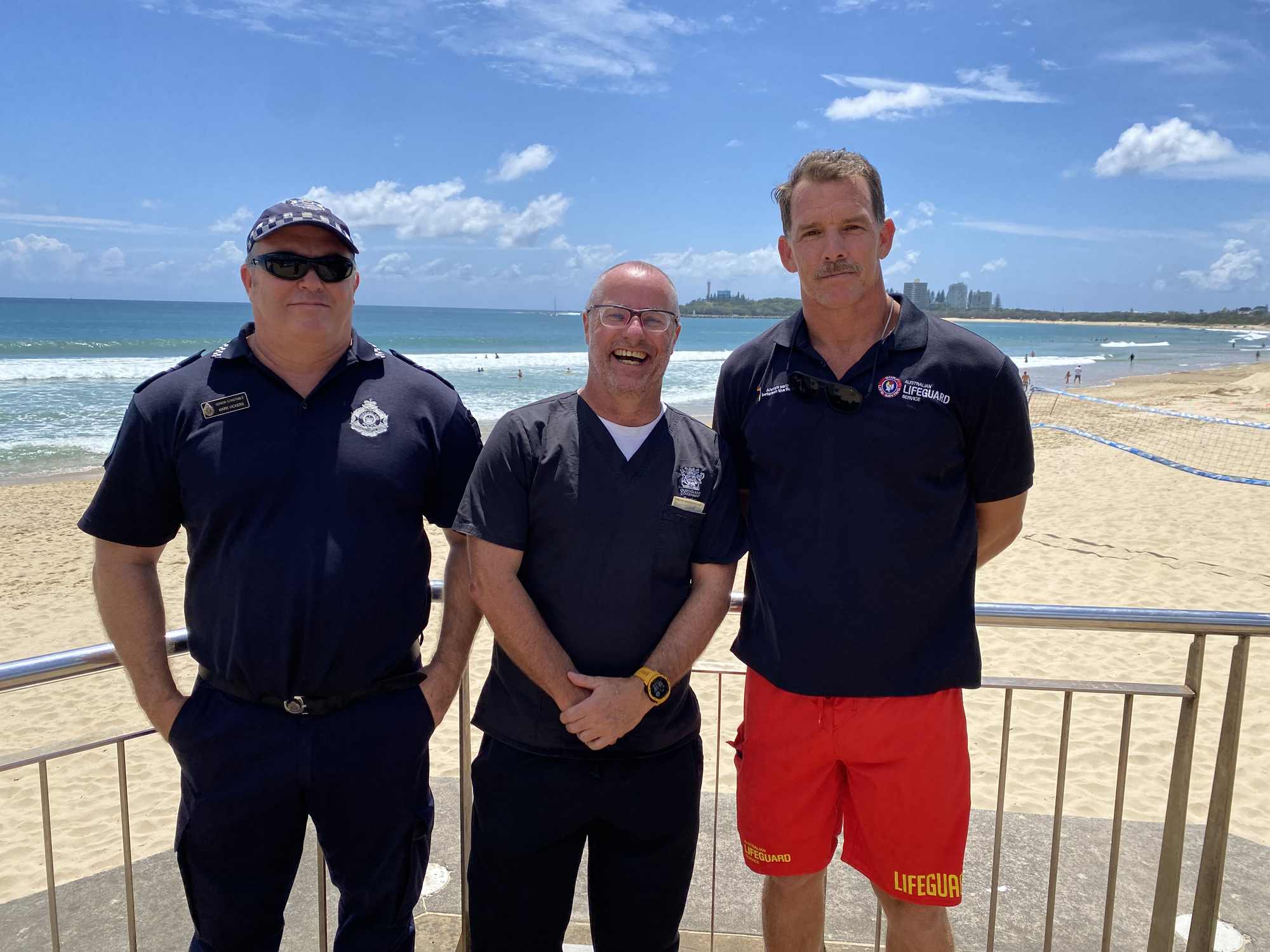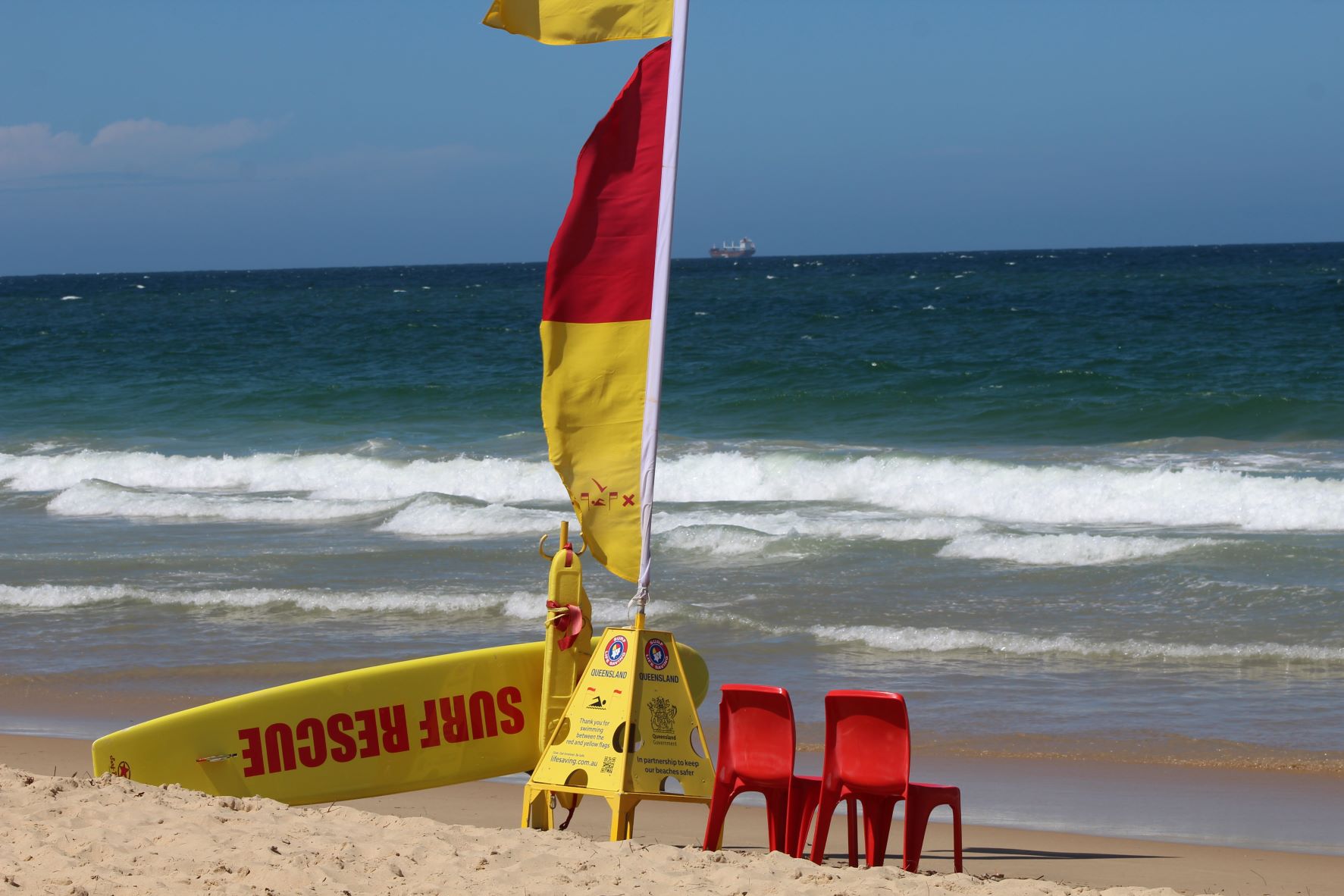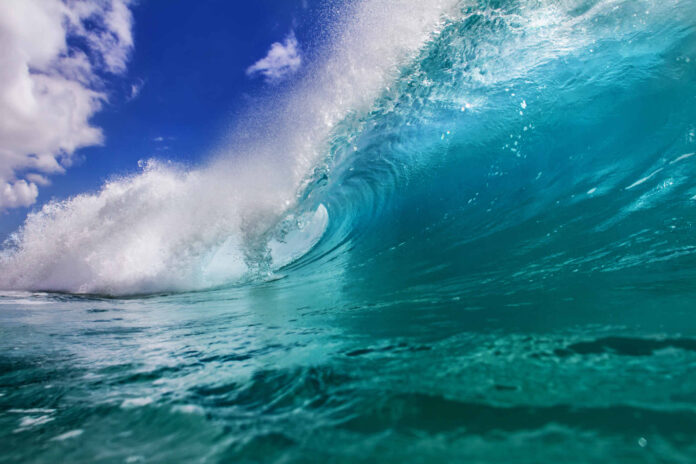An emergency physician is urging beachgoers to take care in the water after an increase in spinal injuries in recent years.
Twenty-four people presented to emergency departments for cervical spine injuries last summer, compared to 20 the previous summer and just five the summer before that.
The Sunshine Coast Hospital and Health Service, Water Police and Surf Life Saving Queensland have implored locals and tourists to be safe in and around the water this holiday season.
Emergency physician Ogilvie Thom, who works at the Sunshine Coast University Hospital emergency department and is a member of Mooloolaba Surf Lifesaving Club, said an “alarming” 15 per cent of people presenting to emergency with broken necks were injured at the beach.
“Being dumped by a wave into the ocean floor is the most common cause of neck injuries,” he said via a SCHHS press release.
“Most of these swimmers were injured on below-average-sized waves and 10 per cent of injuries were surfers diving off their surfboards into shallow water.
Help us deliver more news by registering for our free daily news feed. All it requires is your name and email. See SUBSCRIBE at the top of this article.

“The good news is, there are ways to minimise the risk of these injuries.
“By falling backwards off your surfboard at the end of wave instead of diving and putting an arm out in front of you while bodysurfing you are much less likely to get a spinal injury.”
There are a couple of locations that are particularly dangerous.
“The research shows protected beaches like Mooloolaba and Noosa, where the waves are smaller but dump closer to shore, see an increase in the number of cervical spine injuries,” Dr Thom said.
“It’s important that locals as well as tourists are aware of these safety measures to avoid time in the emergency department over summer.”

Surf Lifesaving Queensland representative Trent Robinson said the easiest way to stay safe was to swim between the flags.
“The red and yellow flagged areas is set up in the safest part of the beach, and lifeguards will monitor all swimmers in this area,” he said.
Sunshine Coast Water Police urged people to wear a lifejacket when boating, rock fishing or on a watercraft, and to not drink or take drugs while undertaking water activities.
Sunshine Coast Life Saving Services co-ordinator Shane Urban implored revellers to stay away from the ocean after consuming alcohol.
“Being New Year’s Eve, people are starting to let their hair down and let their guard down, he told Sunshine Coast News.
“Alcohol and salt water just don’t mix.
“If you’re having a few drinks, we’re imploring you don’t go in the water.”

Packed beaches
There were no drownings on the Sunshine Coast during the traditionally busy Christmas long weekend but patrols were kept on their toes.
There was an estimated 326,485 beachgoers in the region during the four day stretch. Volunteer lifesavers and employed lifeguards patrolled multiple beaches, with 30 rescues and 4300 preventative actions.
A double rescue was performed at Currimundi, while a swimmer who was swept out of Maroochy River required rescuing and O2 therapy.
“It was a busy weekend. There were lots of preventative actions and all of our services were fully operational,” Mr Urban said.
“We knew it was going to be one of the busiest weekends of the season so we prepared for that months in advance.
“Our full complement of thousands of lifesaving volunteers were on patrol, added to our paid lifeguards, and we had cameras, drones, jet skis and the Westpac chopper ‘Lifesaver 45’.
“We were prepared for what could have been bad surf conditions, because we had fairly high tides running and we were concerned about the run-out tide, when big rips happen, so we we were on alert.
“There were rescues effected at a number of beaches, including Noosa, Coolum, Alex and Maroochydore, and all of them were effective.”
He said big tide movements and irregular visitors to the coastline were reasons to be wary at this time of year.
“Long weekends are our more challenging because that’s when people who don’t regularly go to the beach go to the beach and they have less experience and knowledge of the challenges and dangerous a beach can pose,” he said.
“They may think a beach looks like the best place to swim because there’s no surf and it’s nice and deep but in fact it ends up being the worst spot to swim.”
He said the big tides posed risks around entrances to rivers and passages.
“We don’t encourage anyone to swim at Happy Valley, between Kings Beach and Bulcock Beach,” Mr Urban said.
“There are flags at Kings and Bulcock but for whatever reason, people like to spend time at Happy Valley and the old bar there is very treacherous when water is running quickly. It can pick someone off their feet. That area is not great at low tide.
“We also discourage swimming at the Maroochy River and the Noosa bar. They have flags close by.”
Sixteen people have have died in Australian waterways during the summer holidays, with 11 since Christmas Day.
SUBSCRIBE here now for our FREE news feed, direct to your inbox daily!





